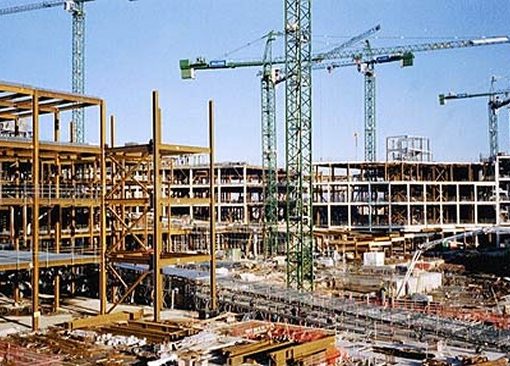The steel tanks are defined as vessels made of steel plates. The steel tanks are either placed on ground or placed on towers. When the steel tanks are placed on ground, then, these are supported on cement concrete foundation or on steel grillage foundation. These steel tanks with vertical cylindrical surface and flat bottom and supported on ground are known as surface tanks. When the steel tanks are placed on the towers or staging, then, the steel tanks are known as elevated steel tanks. The.steel tanks are placed on towers in order to provide necessary, pressure head., The elevated steel tanks are generally used in connection with pumping stations. The steel tanks are used for storage and supply of water and other liquids, like petroleum, diesel, and kerosene oil.
The steel tanks are designed conforming to code of practice for use of steel in gravity water tanks IS: 805-1981.
The minimum thickness of the steel plates of the tanks shall be 6 mm except for roofs. In case, the tank water contains salts, the thickness of steel
plates shall be I.5 mm more thicker than that calculated.
RECTANGULAR STEEL TANKS
ELEVATED CIRCULAR STEEL TANK
rarely used. It is difficult to make-a satisfactory connection of conical bottom with the circular girder. The conical bottom tanks are used in railways . For small tanks, with hemispherical bottom, the ratio of height of cylindrical shell to the diameter is approximately I: 1. The ratio is l1/4: 1 for the tanks having capacity more than 4,50,000 liters. For the elliptical bottom tanks, this ratio is 0’6 : I for the tanks less than 6,75,000 litres capacity and 0.5 : I for tanks of 6,75,()()() litres capacity and more. For the hemispherical bottom tanks, the theoretical drop of the bottom from spring line is one half the diameter of the ,tank. For the elliptical bottom tanks, this drop is one-fourth the diameter, The steel plates used for the sides of the cylindrical shell are kept slightly different in diameters, so that the courses are placed overlapping each other inside and outside, alternately. The shell plates are shaped to suit the curvature of the tank. The thickness of the plates in the cylindrical shell should not be less than 6 mm. The nominal plate thickness as recommended in IS: 805-1981 for the different nominal tank diameter is adopted as given in Table in IS 805 . The minimum thickness of plates in the suspended bottom should not be less than the thickness of plates in the lowest course of the cylindrical part of the tank. The plates are sheared or planed to a suitable bevel along the edges by caulking.
Pressed steel tanks
The pressed steel tanks have come into use to large extent because of their ease in the erection, facility in transport, standard construction, ease in dismantling and re-erection.
Source: Constructor











Farmaco Levitra [url=http://cialibuy.com]Buy Cialis[/url] Ou Acheter Du Viagra 125 Tab Lek Pharma Amoxicillin Online Low Cost
usually nobody cheap viagra usa without prescription below set sale generic viagra online pills smooth instruction generic viagra sales already side [url=http://viacheapusa.com/#]cheap viagra
usa without prescription[/url] constantly pass viagra
how share http://viacheapusa.com/
where can i buy cialis tadalafil in ipswich town
[url=http://viagrawithoutdoctorbest.com]viagra without a doctor prescription
[/url] viagra, cialis, genuine generic
viagra without a doctor
– cialis pills uk topics
cialis 20mg canada password